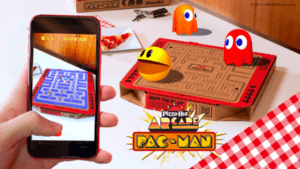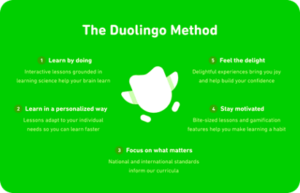Businesses are constantly looking for innovative ways to stand out and achieve their key objectives. This can be external (accessing new customers or retaining existing customers) or internal, such as engaging employees and boosting productivity. In both cases, gamification in business has been shown to be tremendously effective at achieving these goals.
We’ll look at 10 successful gamification in business examples, from multiple industries and companies.
What is gamification in business?
To start, it’s important to define the subject. Gamification in business is the use of popular elements borrowed from gaming – such as earning points or advancing through levels – and applying these in a business context. An example of gamification in business could be a rewards program or an employee-wide platform that engages a workforce and increases their productivity.
Gamification in business has been around for many years. What’s really changed the game recently is purpose-built platform providers who can gamify any aspect of a business to improve it, from training and onboarding to feedback and employee engagement. Nothing needs to be boring, and thanks to mobile phones, every gamification experience can be personalized and accessed at just the right time by the target audience.
Gamification in business is successful because it shares all the positives of gaming as entertainment: it is fun, engaging, and stimulating; it adds context, can make individual activities social, connects people, and provides an ongoing challenge that keeps people coming back for more.
10 Successful examples of gamification in various business industries
We’ve collated 10 top gamification in business examples. These are generally well-known companies using gamification to achieve specific business goals.
1. Nike Run Club
The Nike Running Club app is packed with gamification that has been instrumental in its success. By engaging even solo runners, all users feel that they are part of “The Club.” Gamification includes leaderboards, weekly challenges, personalized goals, unique “Achievements,” virtual high-fives, and more.

Source: Nike Run Club
2. KFC
KFC launched an in-app rewards program based on classic arcade games, called “KFC Rewards Arcade.” Users can play games to win prizes – including free KFC menu items – in an entertaining, interactive, competitive way.

Source: Little Black Book
3. T-Mobile
When it comes to gamification in business examples, T-Mobile is actually building its business on gamification as the future for businesses of all kinds. In a recent article on the T-Mobile for Business website, it was noted that gamification presents “opportunities to transform a variety of other industries and boost business outcomes beyond media and entertainment.” T-Mobile intends to underpin this trend, especially in leveraging its 5G capabilities, citing multiple gamification in business examples.
Ulf Ewaldsson, senior vice president of technology transformation at T-Mobile, commented regarding gamification that “Whether it’s entertainment, education or on-the-job training, the faster speeds, ultra-responsiveness, and connectivity enabled by next-generation networks will drive innovations.”
4. Starbucks
Starbucks has embraced gamification through its My Rewards program. As one of the best gamification in business examples, it seamlessly incorporated gaming elements to drive business results. Users collect Stars and can redeem these for rewards – from drink customization to Starbucks merchandise. The program is a massive success: “Starbucks attributes 40% of its total sales to the Rewards Program and has seen same-store sales rise by 7%.”
5. Pizza Hut
The brand launched its “Newstalgia” campaign, which celebrated what fans “know and love” about the brand. Incorporating the actual PAC-MAN game, together with a celebratory pizza box, fans could use Augmented Reality (AR) to play the game using their smartphone. There are other prizes available, and the launch created a huge amount of hype, making this a highly successful gamification in business example.

Source: Pizza Hut
6. Peloton
Peloton itself is a fantastic gamification in business example. The entire platform is built on leaderboards, challenges, badges for achieving milestones, “streaks,” and other gamification elements.
The brand solved a challenge where isolated individuals exercising could somehow be connected. By enabling this connection through gamification, Peloton has grown to be a $3.6 billion company.
7. Uber
Uber gamifies the experience for its drivers through a combination of elements to keep them engaged, motivated, and connected to the company. The system tracks a driver’s efficiency, and “unlocks” different levels of rewards and opportunities, based on points earned for example by completing trips during off-peak times.
This is particularly smart as the company was dealing with the challenge of attracting and retaining drivers for the platform, as well as ensuring that users would have rides available during off-peak times when some drivers might feel that it just wasn’t worth being on the app. This gamification in business example elegantly addressed both of those challenges.
8. Target
Target created a “Holiday Wish” app that incorporated a 3D gaming experience, allowing kids to send their wish lists to Santa. From choosing an avatar to adding AR functionality, this app uses gamification to drive real-world results.
9. Duolingo
This popular app relies on gamification to retain and engage existing users and appeal to new ones. From personalized learning to “streaks,” achievements, levels, badges, challenges, and rewards, the app has proven to be extremely effective at teaching languages – thanks to its smart use of gamification.

Source: Duolingo
10. Heineken
The beer brand leveraged its sponsorship of the famous tennis tournament to launch its “Crack the US Open” campaign. It used its Instagram feed to create a photo scavenger hunt. Challenging questions, quizzes, and other classic gamification in business examples meant that the campaign achieved its goals.
Gamification tools and solutions for business
While there are different gamification tools available for niches, the general best practice is to leverage an all-in-one platform that offers multiple gamification options.
Gamification platforms offer a full suite of tools for both internal and customer-facing gamification requirements. Centrical makes building campaigns super easy, and you can choose from elements such as in-game narratives, points systems and rewards, tiered levels that must be unlocked, badges, leaderboards, and more.

To see Centrical in action, and how it can benefit your gamification use case, see a preview here.
Best practices for implementing gamification in business
There are a number of recommended best practices when it comes to implementing gamification in business. The gamification examples in companies shown above incorporate many of these best practices, which include:
- Ensure the gamification option you’ve chosen is relevant to your business goals
- Communicate your business gamification plan effectively both internally and externally
- Choose the right provider for you – ensure their solution can scale effectively, and that they have the track record to prove they can support your goals
- Ensure gamification journeys are on-brand throughout
- Remember that almost any area of your business can be improved through gamification
The world’s largest and best-known companies all use gamification in some shape or form to achieve their business goals. From Microsoft using gamification to reduce absenteeism in call centers, to Verizon using gamification to drive sales. Gamification can be used by companies of all sizes, in any area where a business challenge needs to be solved.
Final Thoughts
These corporate gamification examples show just how effective gamification can be in almost every aspect of a business. From upselling existing customers to boosting loyalty and engagement, to using internally within an organization, gamification in business has a proven track record.
Gamification in business is only going to become even more popular. Click here to book your personalized demo and see how the Centrical platform can work magic for your organization.
Engage and motivate your frontline teams
Improve performance with an AI-powered digital coach
Deliver world class CX with dynamic, actionable quality evaluations
Boost performance with personalized, actionable goals
Nurture employee success with the power of AI
Listen and respond to your frontline, continuously
Drive productivity with performance-driven learning that sticks
Drive agent efficiency, deliver client results
Keep tech teams motivated and proficient on products and services while exceeding targets
Maintain compliance while building customer happiness and loyalty
Enlighten energy teams to boost engagement
Engage, develop, and retain your agents while driving better CX
Improve the employee experience for your reservations and service desk agents












 Madeleine Freind
Madeleine Freind
 Natalie Roth
Natalie Roth Linat Mart
Linat Mart












 Doron Neumann
Doron Neumann Gal Rimon
Gal Rimon Daphne Saragosti
Daphne Saragosti Ella Davidson
Ella Davidson Ariel Herman
Ariel Herman Ronen Botzer
Ronen Botzer